Big Ω and Θ Notations
1/10
There's no tags or description
Looks like no tags are added yet.
Name | Mastery | Learn | Test | Matching | Spaced |
|---|
No study sessions yet.
11 Terms
Big-O Formal Definition
T(n) ∊ O(f(n)) if there are positive constants M and n₀ such that
T(n) ≤ M×f(n) for all n ≥ n₀

Big Ω Formal Definition
Let T(n) and f(n) be two positive functions from the integers or the real numbers to the real numbers
T(n) is Ω(f(n)) if even as n becomes arbitrarily large, T(n)'s growth is bounded from below by f(n), meaning it grows no slower than f(n)
T(n) ∊ Ω(f(n)) if there are positive constants M and n₀ such that
T(n) ≥ M×f(n) for all n ≥ n₀
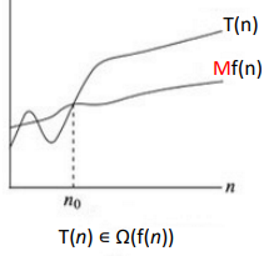
Big Θ Formal Definition
Let T(n) and f(n) be two positive functions from the integers or the real numbers to the real numbers
T(n) is Θ(f(n)) if even as n becomes arbitrarily large, T(n)'s growth is bounded from above and below by f(n), meaning it grows no faster and no slower than f(n)
T(n) ∊ Θ(f(n)) if there are positive constants M1, M2 and n₀ such that
M1×f(n) ≤ T(n) ≤ M2 ×f(n) for all n ≥ n₀
It means T(n) ∊ Θ(f(n)) if T(n) ∊ O(f(n)) AND T(n) ∊ Ω(f(n))
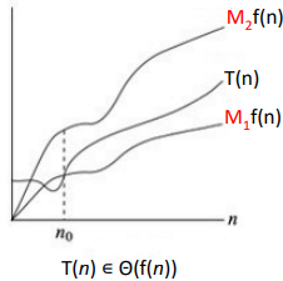
Big O, Big Ω, Big Θ Graphs
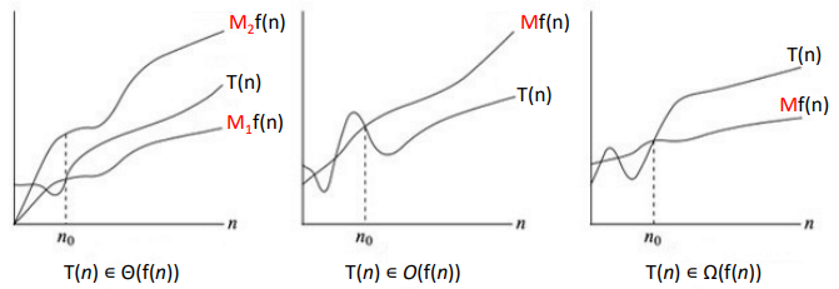
In General
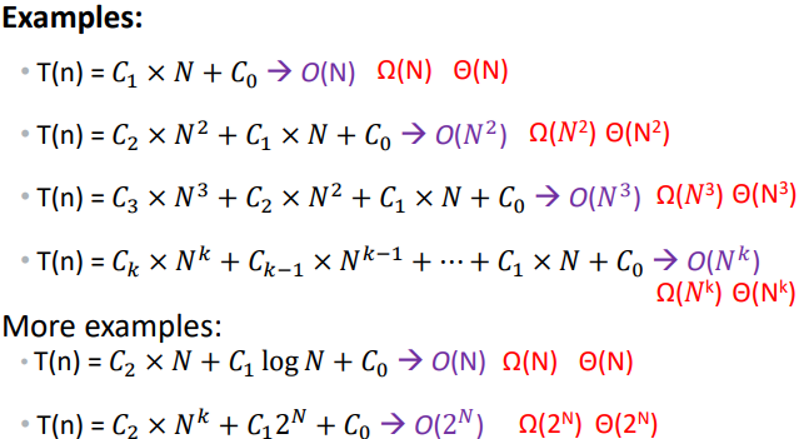
Is Linear Search O(n)?
yes, there is no input of size n for which the runtime is not bounded from above by n
Best case O(1), O(log n), O(n), ….
Average case O(n), O(nlog n), O(n^2), …..
Worst case O(n), O(nlog n), O(n^2), …..
Is Linear Search Ω(1)?
yes ,there is no input of size n that takes less than a constant amount of time
true for every algorithm
Best case Ω(1)
Average case Ω(n), Ω(log n), Ω(1)
Worst case Ω(n), Ω(log n), Ω(1)
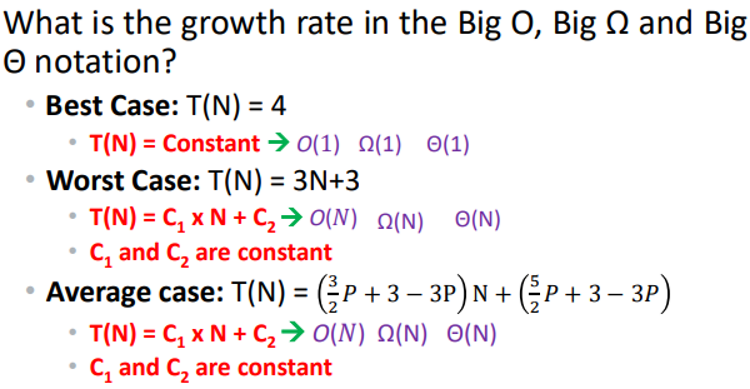
Is Linear Search Θ(n)?
no, there is an input of size n, the best case, specifically, for which the runtime is Θ(1)
Best case Θ(1)
Average case Θ(n)
Worst case Θ(n)
Big O
rate of growth of an algorithm is <= a specific value
defined as upper bound
Big Ω
rate of growth is >= a specific value
defined as a lower bound and lower
Big Θ
rate of growth is == to a specific value
defined as tightest bound, best of all the worst case times that the algorithm can take